The Tale of Baijie
Nine hundred years ago, an area in south China called Dali was divided into six kingdoms. Piluoge, the ruler of the largest kingdom, wanted to defeat the five other rulers so he invited them to a ceremony to worship their common ancestors. Baijie, the wife of one of the other five rulers (Dengdan), felt the invitation was a trap. She tried to convince her husband to stay home but he worried he would offend Piluoge if he refused. Before he left for the ceremony, Baijie placed an iron bracelet on her husband’s arm.
Unfortunately, Baijie’s suspicions were right: during the ceremony, Piluoge snuck away and lit the ceremony building on fire, killing everyone inside. Because Baijie had the foresight to send her husband off with the iron bracelet, her husband’s was the only body that could identified and given a proper burial. Piluoge was impressed by Baijie’s foresight and took her as a wife. After their wedding, they sailed around Dali’s giant Erhai Lake. Baijie got Piluoge drunk and tried to kill him with a knife. Alas, Piluoge survived the attack so rather than be forced to marry her husband’s murderer, Baijie jumped into the lake and drowned. (Photo courtesy Megan Bryson.)

Since then Baijie (‘White Sister’) has been worshipped for her wisdom, courage and loyalty in villages throughout the Dali region, as part of Benzhu, the Bai people’s tradition of local deity worship. Each village worships one of the over 500 Benzhu gods, which range from historical figures to Buddhist and Daoist deities. We were lucky to visit the land where Baijie is revered in China’s Yunnan province.
Kunming – City of Eternal Spring
We started in Kunming, the capital of the province, and right away we noticed lots of differences from eastern China. Fellow tourists and expats were much more rare – we didn’t see any other non-Chinese people for three full days. There were also fewer overweight people than in the big, affluent cities. And whereas most of the population in the east (and 92% of China) is made up of the Han majority, Yunnan province is filled with tens of different ethnic groups, like Dai, Naxi, Lisu and many others (in fact, 51 of China’s 55 ethnic minorities are found in Yunnan province).
Some things, however, were similar to what we’d seen in other parts of China. Most comical, the hot fashion trend for men seems to be crop tops – the men love to hike their shirts up to their chests, so everywhere we went we were treated to the sight of bare male bellies.

In addition, the concept of privacy is very different (or nonexistent) throughout China, as was obvious when encountering public (unisex) bathrooms like this one.

Another common sight throughout China was a crowd of adults showering attention on a single child. Because of China’s 30 year-long one-child policy (recently ended in October 2015 and estimated to have prevented 400 million births), most families only have one child on which to rest their dreams for the future (and their hope to be taken care of in their old age). The policy has led to a host of social issues, like Little Emperor Syndrome (which some research has shown leads to greater selfishness, less self-discipline, and poor social skills). (Photo courtesy NPR.)

Another effect of the one-child policy is a striking gender disparity that has led to a huge surplus of eligible bachelors (with up to 30 million more unmarried men than women!). In a country where marriage is seen as an imperative, the older generations often advertise their children at marriage markets to increase their chances of finding honor through union. We happened to stumble upon the Kunming marriage market one Saturday morning. There were hundreds of people milling about, reading over the thousands of ‘marriage wanted’ ads posted on walls and hanging from wires. While we were perusing the ads, Sarah even received a proposal from a jocular man in his 80s.
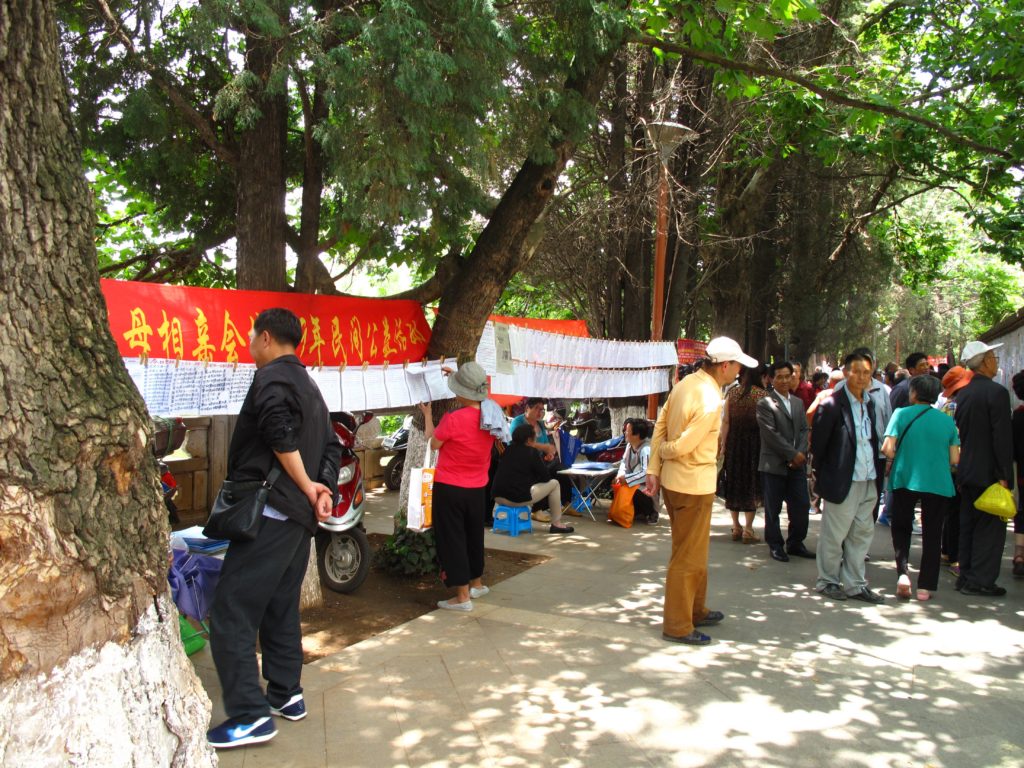
This post describes a 30-year-old woman with ‘white skin’ and ‘filial parents’ seeking an ambitious man born between 1980 and 1990 with no bad habits.

We decided not to add our own names to the list and spent the rest of the day exploring the beautiful Green Park,
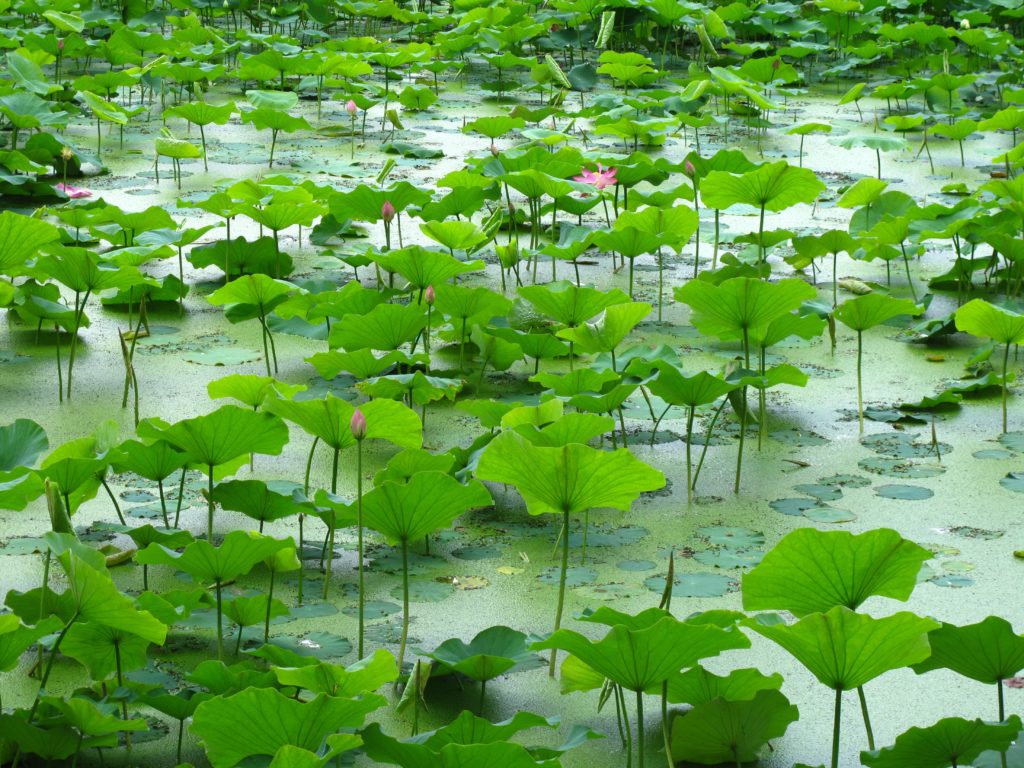
Visiting the Kunming Saturday market, which was overflowing with Mao memorabilia,

lots of things that we didn’t understand — like this gentlemen touting these leaves in spring-loaded baskets (fortune-telling?),
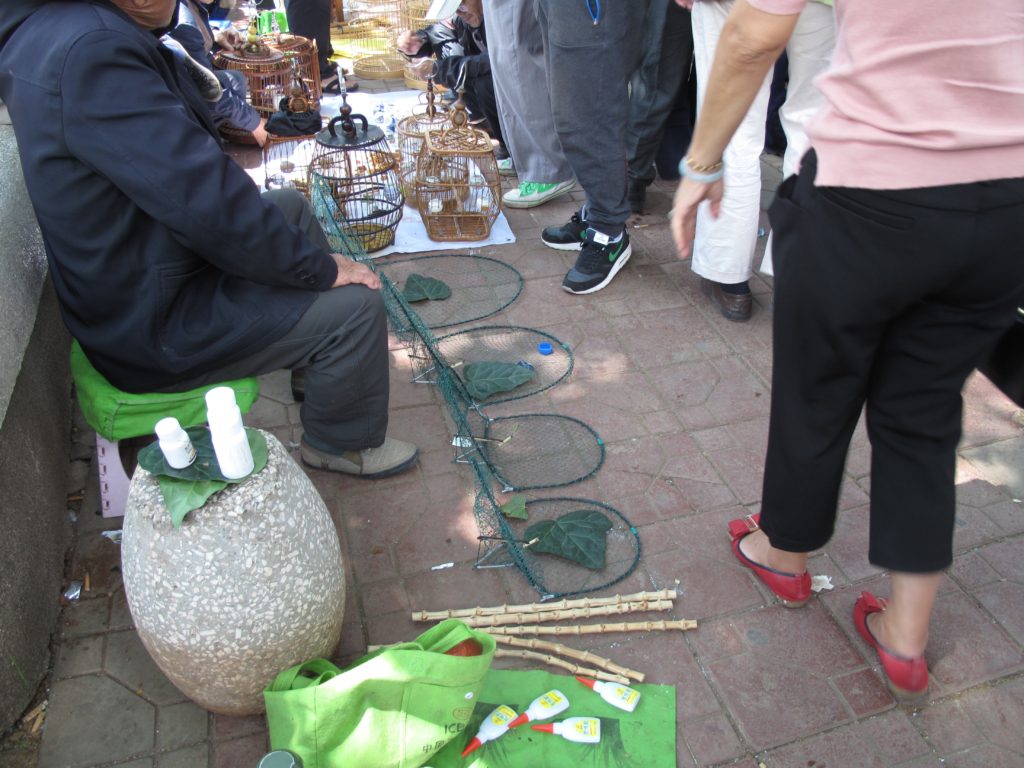
and a huge animal market with an odd variety of animals, like these hedgehogs
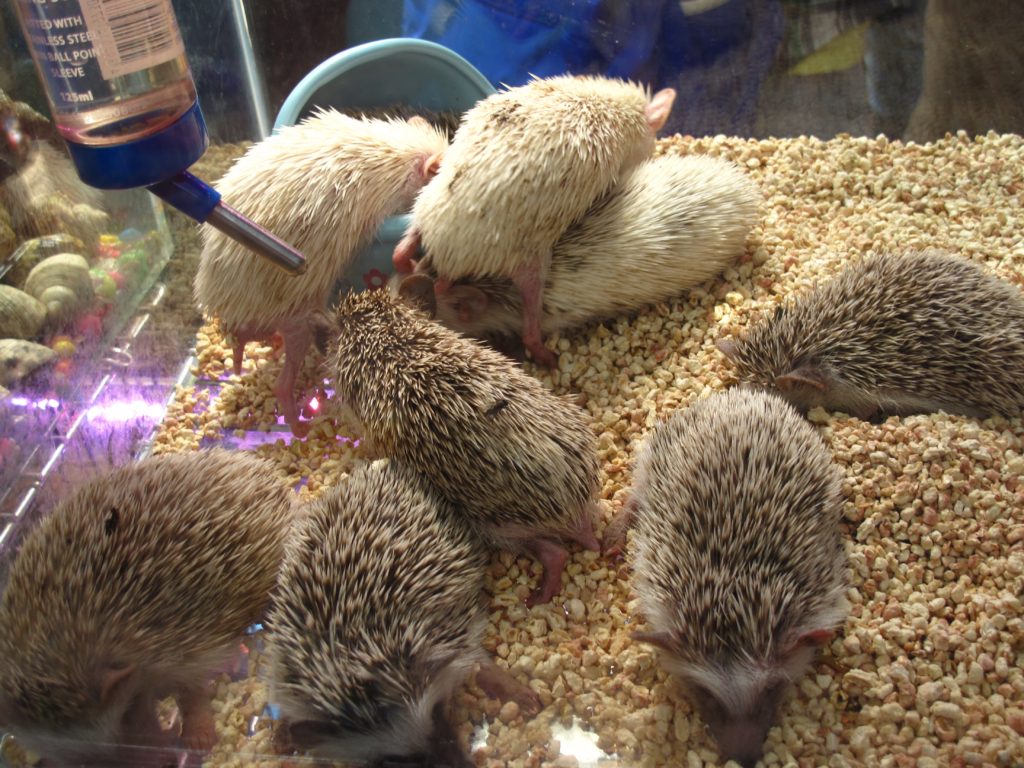
these beetles,
and many other animals, whose purpose and destiny wasn’t really clear to us.
We also tried out a local dish, called Crossing Bridge noodles (or guoqiao mixian), which is traditionally given to students who are studying for the gaokao exams, super important and high pressure tests which essentially determine the fate of a student’s life. The dish came with about 30 ingredients separated in different dishes. When they delivered the food, we looked at each other helplessly, without any idea how to proceed. Luckily, one of the servers spoke English and walked us through the procedure. In the process, the server must have developed a bit of a crush on Jason since she asked for his Whatsapp number and texted him for several days after.

Our biggest Kunming adventure was visiting the Stone Forest, an evocative set of limestone towers that was part of a shallow sea some 270 million years ago.

We were lucky to stumble upon a sort of secret back entrance to the forest, with lots of hidden caves and passageways, and very few other tourists. It was nice to have some solitude after weeks of dense crowds in the cities of China.
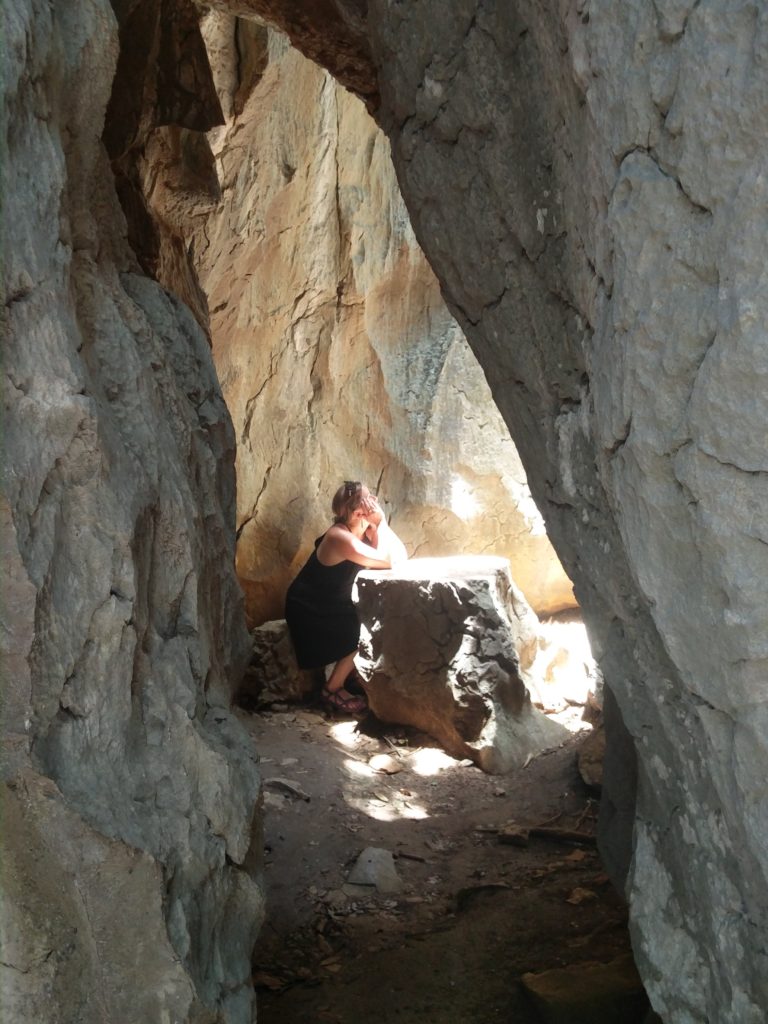
But we soon realized we weren’t really alone. Scores of cameras watched us from every corner of the park.

Despite being under the eye of China’s big brother, we enjoyed the surreal views,
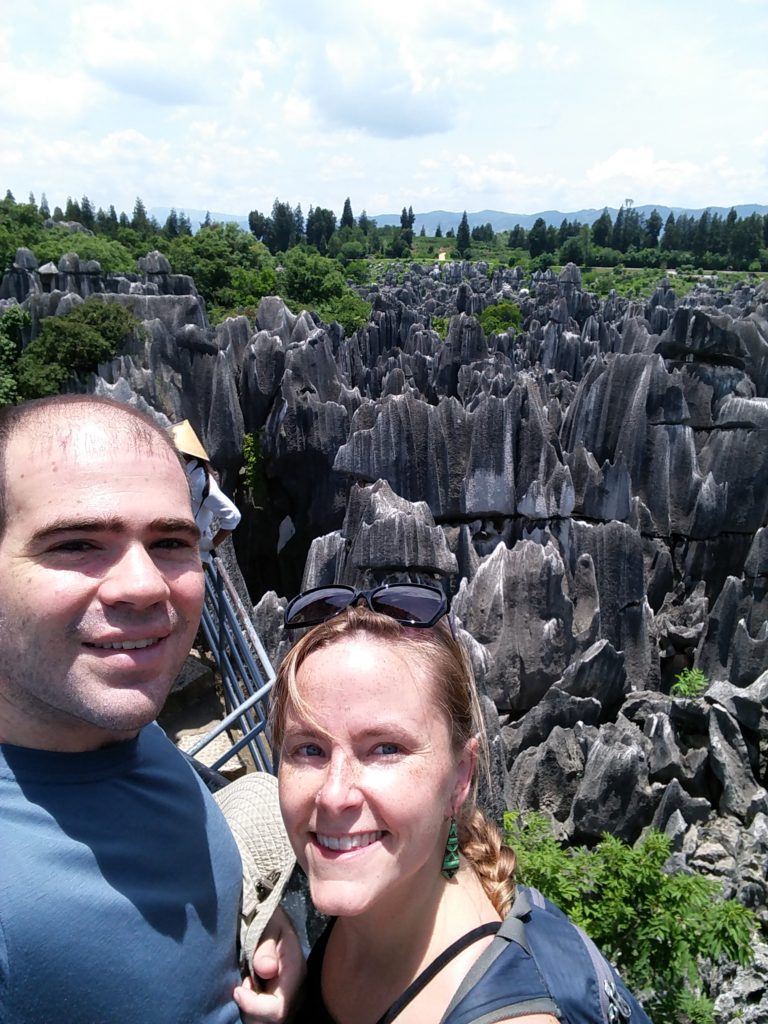
Traditional Yi costumes,
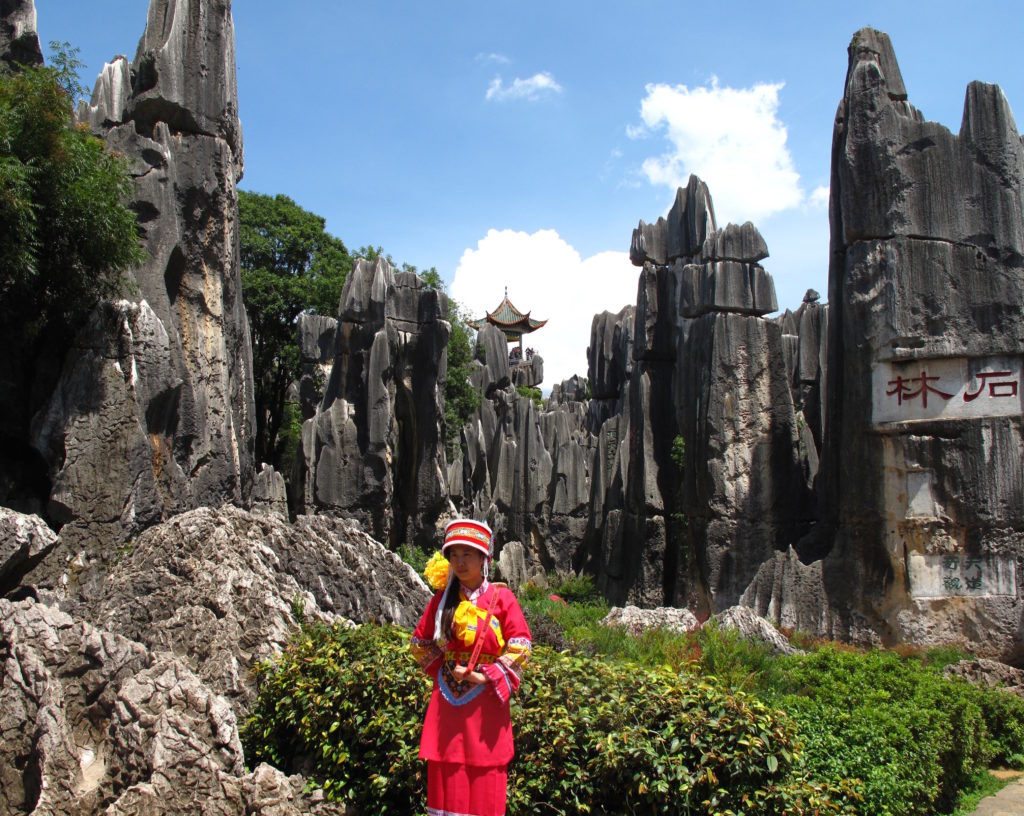
And striking rock structures, many with legends behind them, like this one named after Ashima, a woman who was kidnapped and forced to marry an evil landlord. Her lover fought for her freedom via a singing competition and won. Sadly, Ashima drowned on the way home from the competition and is now considered a symbol of the virtue of the freedom to marry whom you choose.

Dali – Home of Baijie
At the train station en route from Kunming to Dali, we chuckled at the no-shoving technology that China had developed to try to enforce the concept of a queue.

When we arrived at our destination, we were greeted by a sight that has become very familiar to us: 40+ cab drivers waiting hungrily for a foreign fare that they can overcharge. We’re getting a *little* bit better at not getting ripped off, but even after all these months such interactions are a little stressful. Luckily we got a nice driver this time….
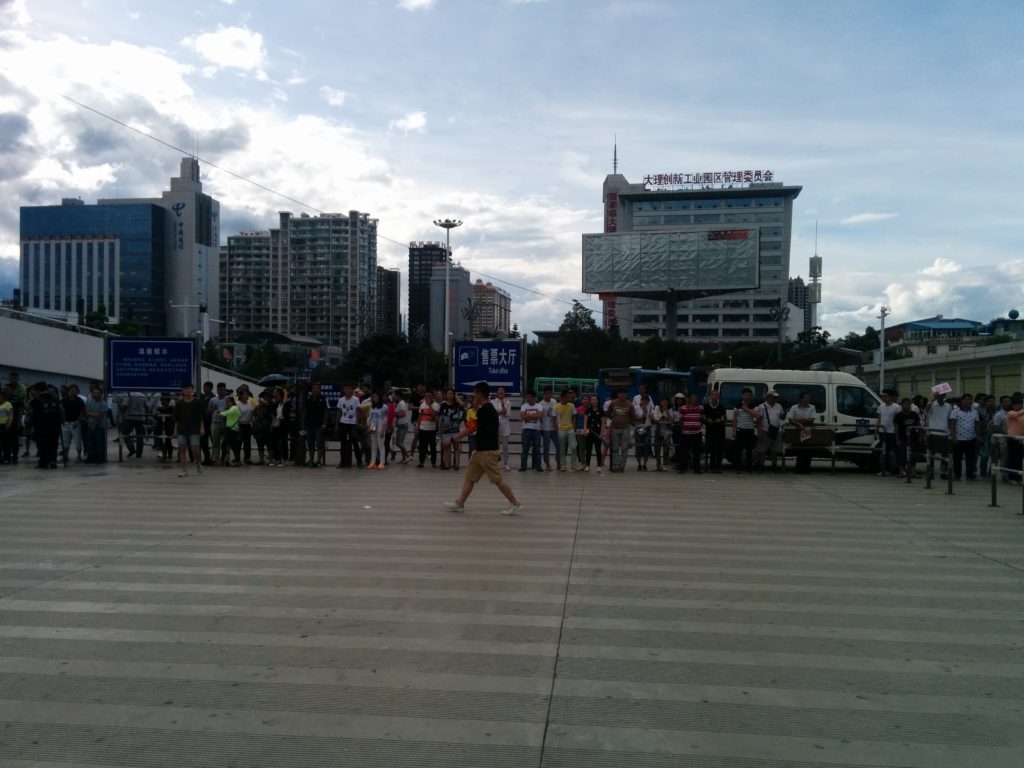
Who took us to our home for the next week, Monster B & B, which is highly recommended if you visit Dali.

Not in small part because of their amazing resident dog Lǜsè (or ‘green’ in Chinese). Here he is getting disciplined for jumping up on the couch. He stood dutifully on the chair for about three minutes.

After spending some time playing with Lǜsè, we headed out to explore Dali’s old town, an incredibly charming place with a babbling creek running through it;

The sight and scent of roses everywhere; (Flower cakes (méiguī jiàng) are a popular dessert in Yunnan. Sarah ate them every chance she got, Jason steered clear.)
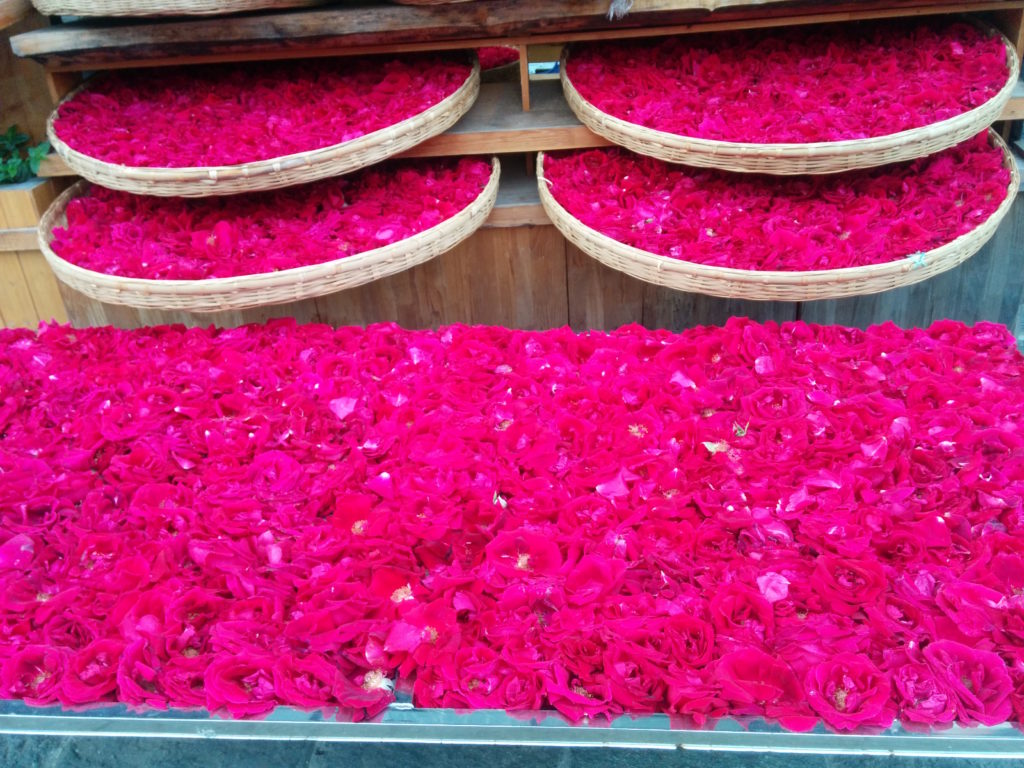
And many trademarks of the Bai people. Bai means “white” in Chinese – the Bai worship the color, and their clothing and architecture reflect this.
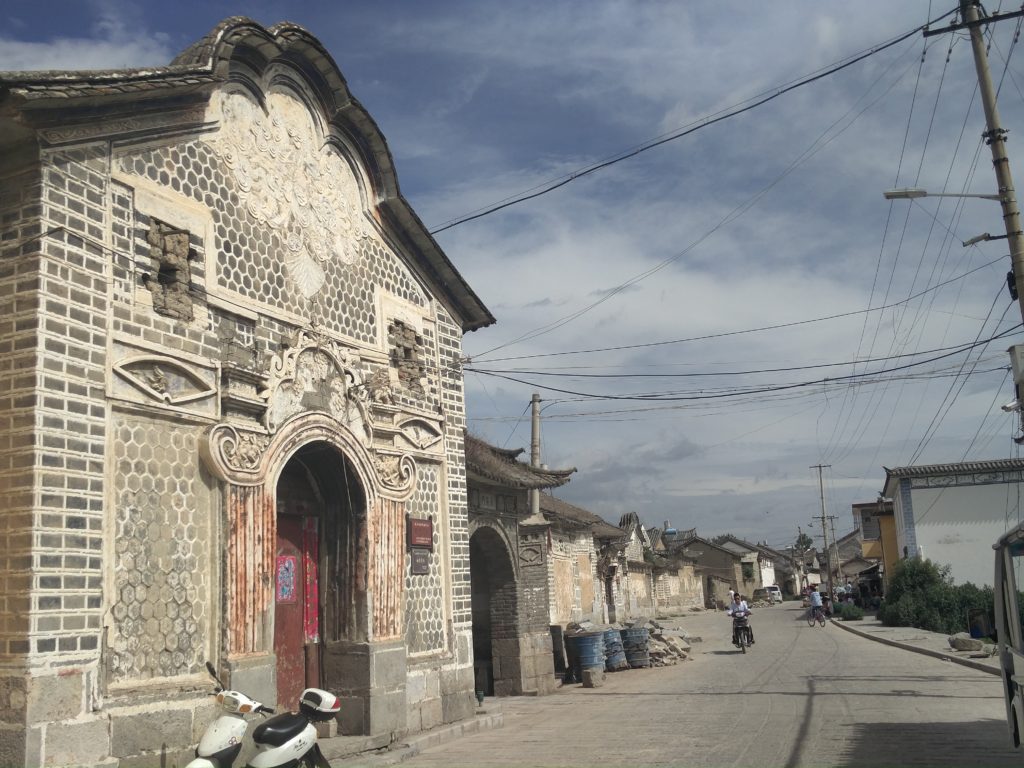
Mixed in with all this charm and history, Dali has a reputation for being a hippie haven — in large part because marijuana grows wild and until the mid-2000s, it was effectively legal. We found this plant on the sidewalk a few hundred feet from our hotel.
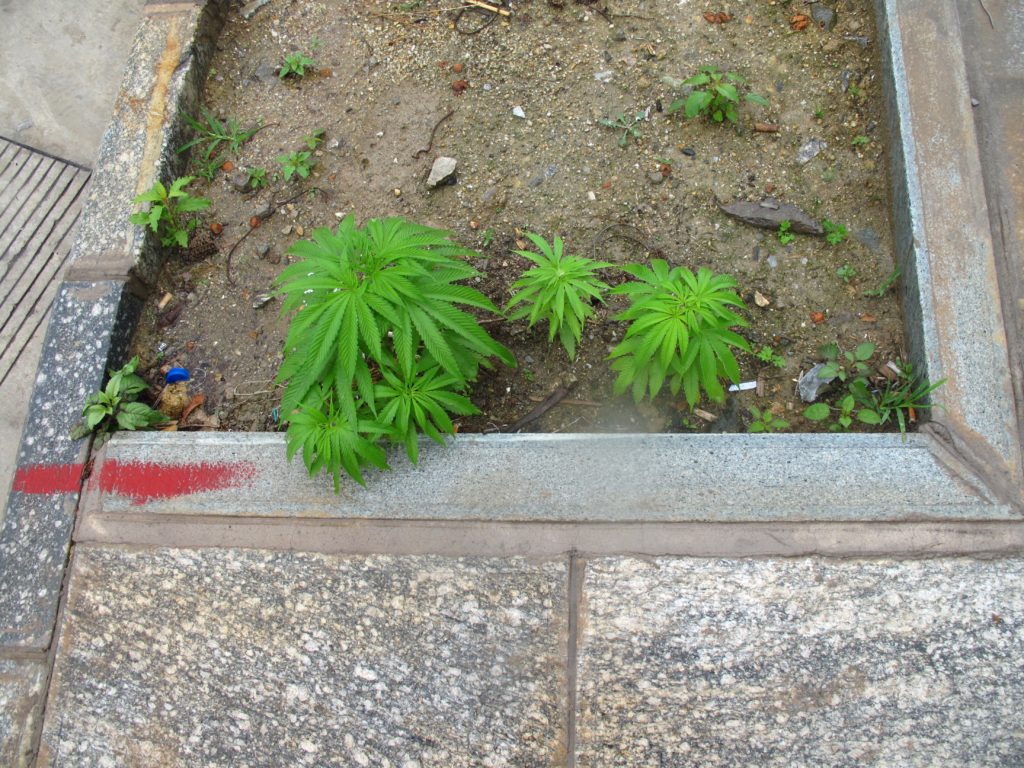
In addition, Dali recently acquired the reputation of being a hotspot for one-night-stands (in part because of this movie). This led to a huge boom in Chinese national tourists, and because of this and the increased policing on weed, Dali now has become a shell of its former hippie self. Now there are tens of shops selling drums and incense, complete with non-hippie proprietors playing the drum with one hand and checking their Instagram accounts with the other.

In the middle of our stay, we took a fantastic food tour with a no-nonsense woman named Luxi. Early one morning, we drove to a nearby town called Xizhou and started off with xi dou fen, a snap pea porridge that the local Bai eat for breakfast. This woman has been making the porridge for more than 70 years.
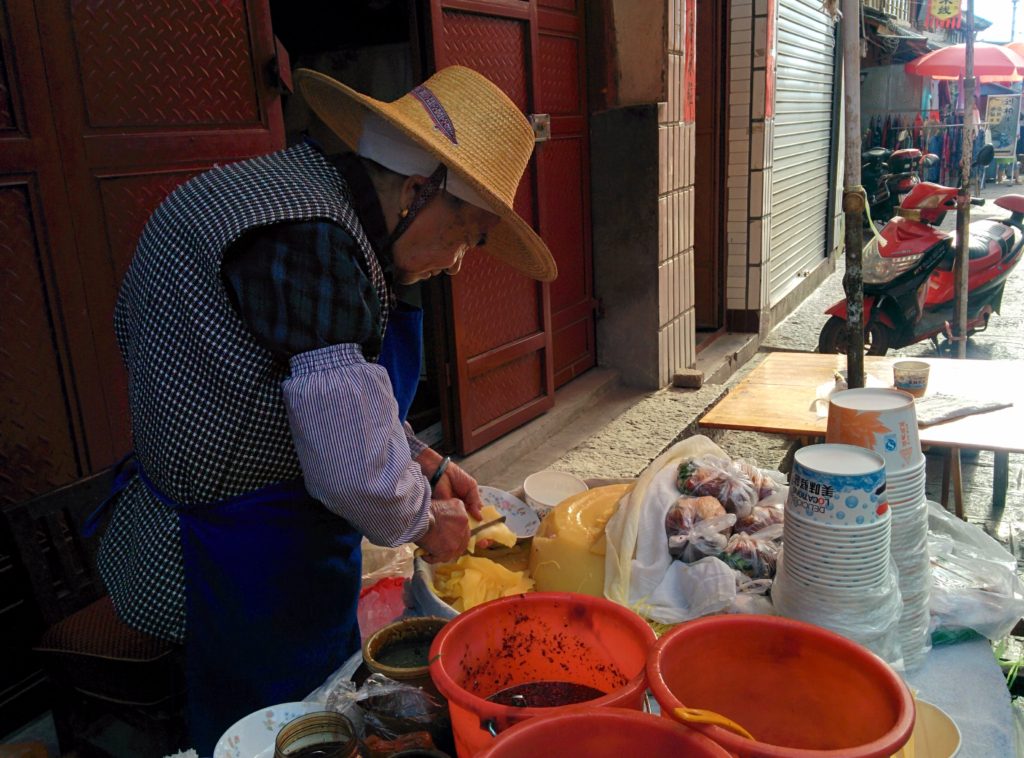
Then we moved on to the famous (and delicious!) baba, Bai pizzas cooked over wood fire. This woman and her family run one of the most popular baba stands in Xizhou. Baba come in two flavors sweet (with caramelized sugar and spices) and savory (with minced pork and chives), both with a decadent crust made with ridiculous amounts of lard.
We also stopped by the house of a local family to try our hand at making some cow’s milk cheese called rushan, which is often served with rose jam.

Then we hit up the market to pick up some supplies for our dumpling making class. The market was a maze of strange, unknown ingredients, like this fermented, hairy tofu,
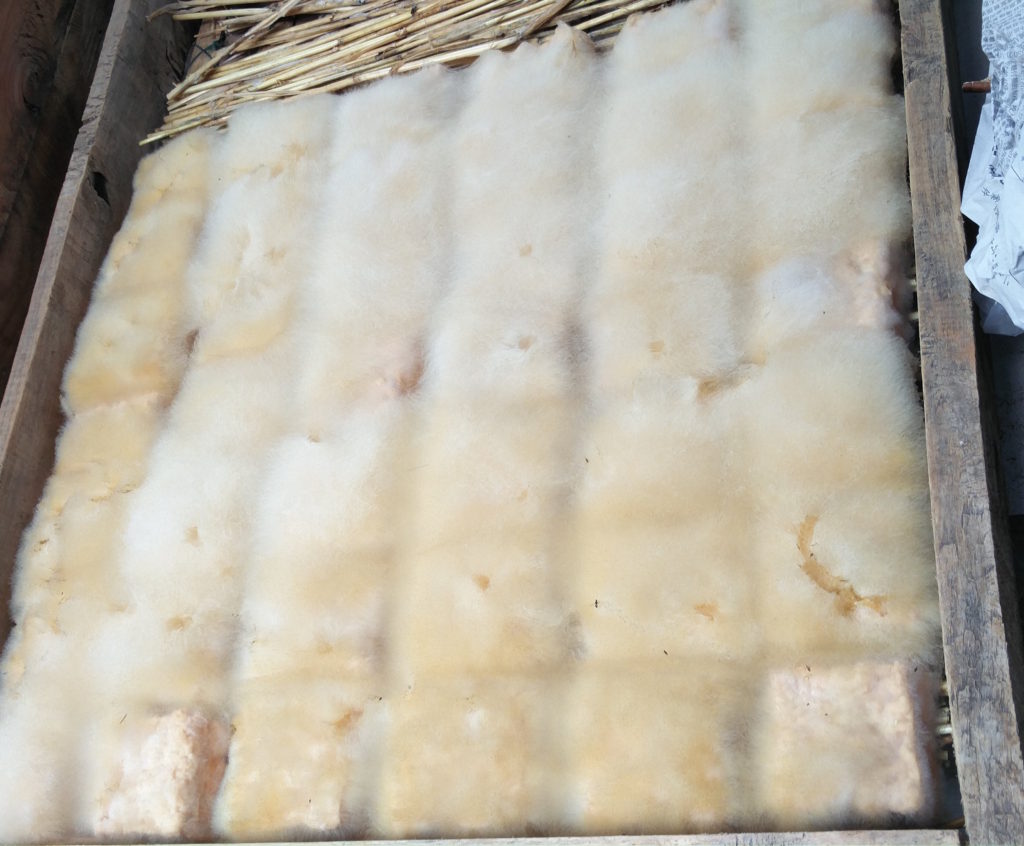
Lots of different Chinese medicines,
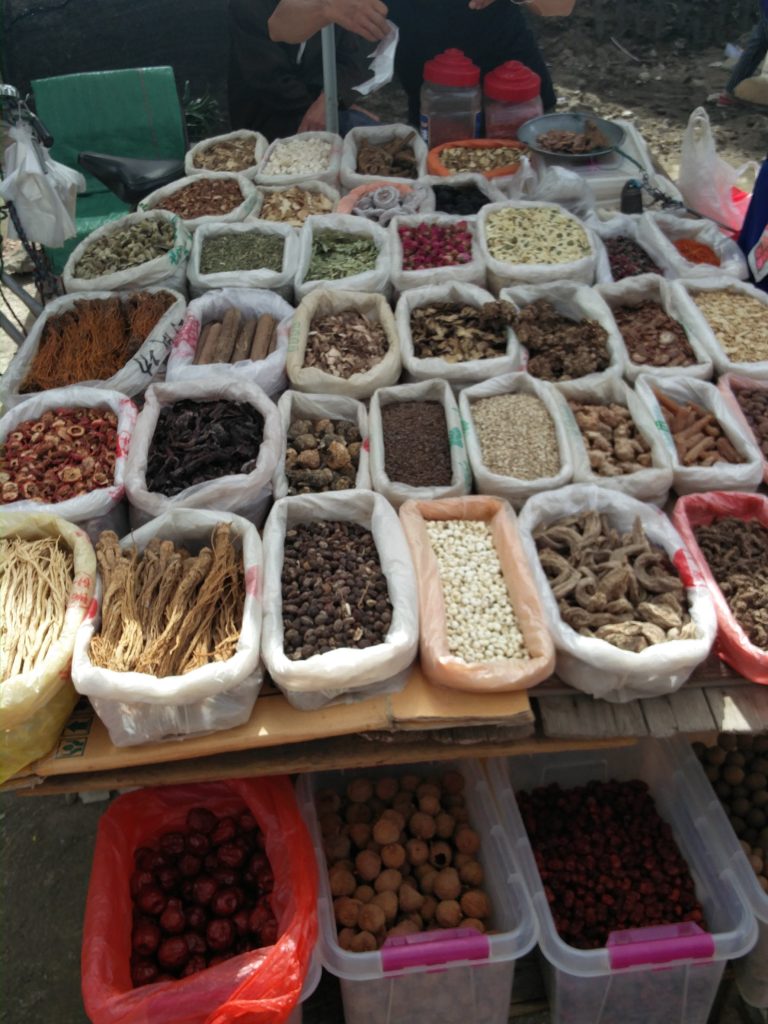
We also saw many large containers of lichen and bark. Apparently, there are some popular Bai dishes that feature these ingredients, but we unfortunately didn’t get a chance to try them.

After we finished at the market, Luxi invited us into her kitchen so we could try making some dumplings! She told us about the many different kinds of dumplings and then patiently showed us how to prepare the dough and roll it out into evenly sized thin circles.

So it could be loaded with the filling we had made (more pork and chives) and folded into the final product. Folding the dumplings is a fine art – the more folds there are, the more esteemed the dumpling. Jason was a natural and he quickly reached the four-fold level. Sarah did not have the same luck – let’s just say Sarah got >=2 folds.

Finally we cooked the dumplings three ways — boiled, steamed and pan-fried — and feasted on them.
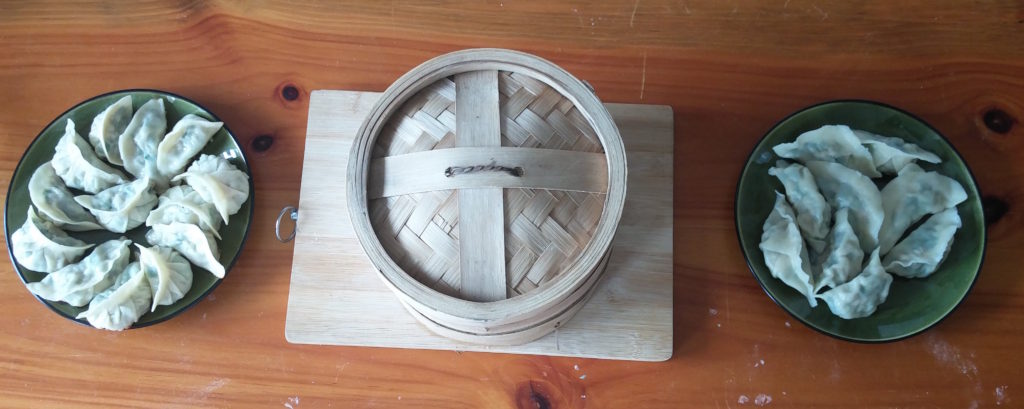
As part of the food tour, we also visited Zhoucheng village, which is famous for their tie-dyeing technique, first developed in the 4th century. They create huge vats of dye from the indigo plant.
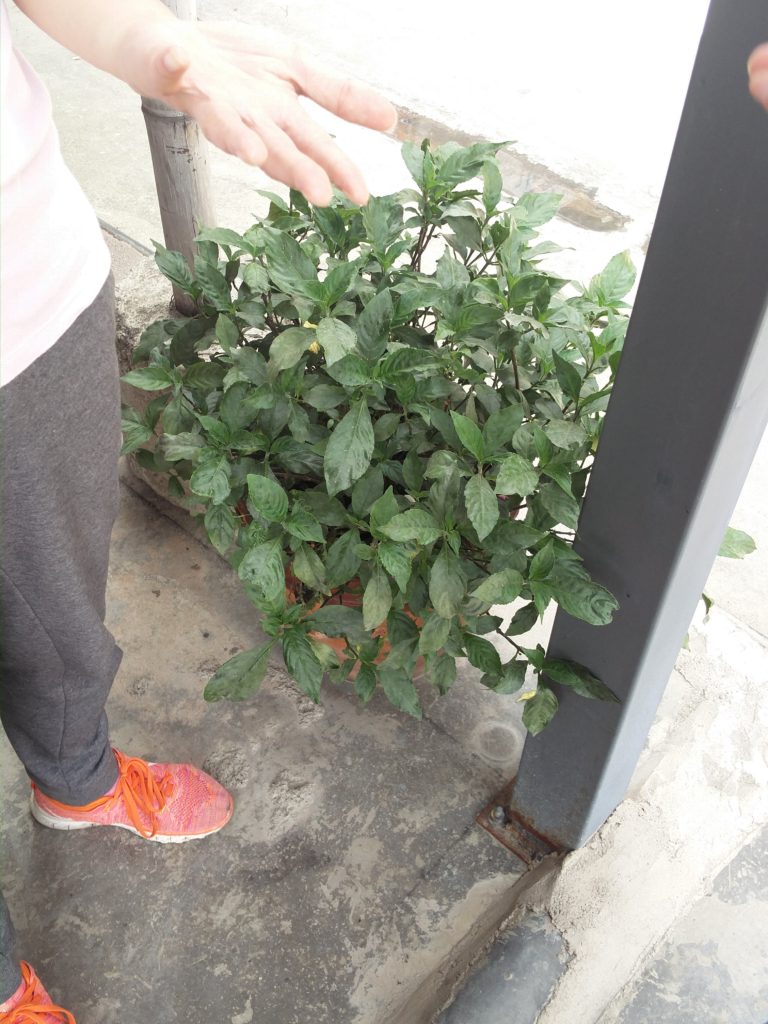
It takes a full year to process a large vat of dye.
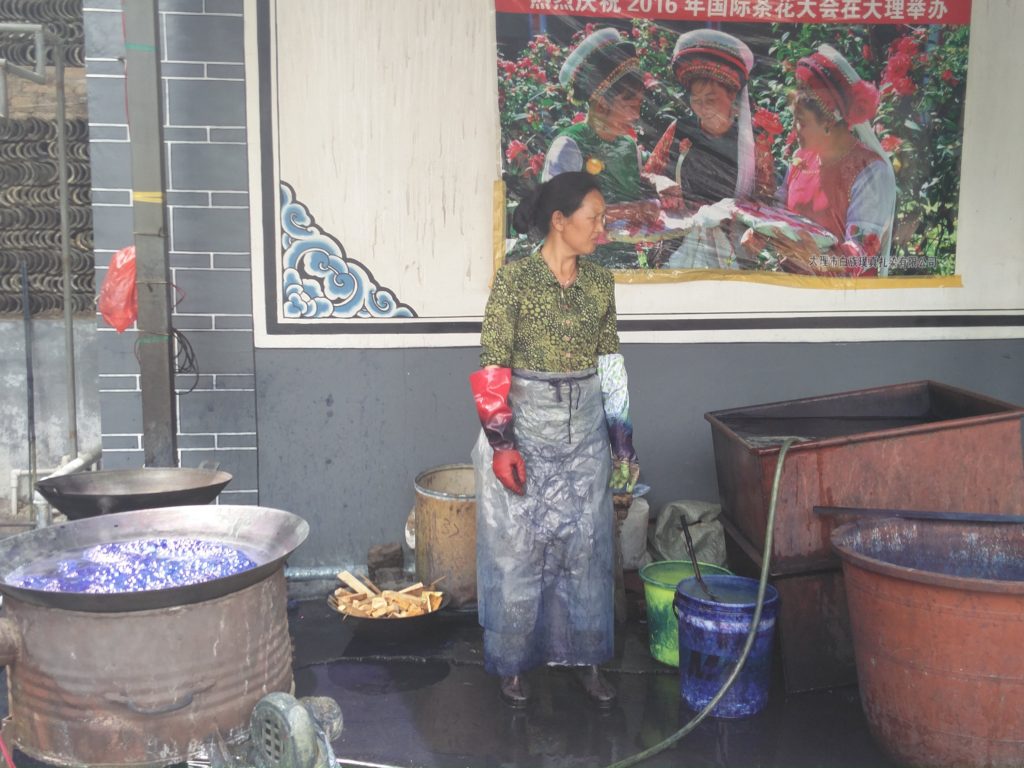
Then they wrap up the fabric in complicated ways, add dye,
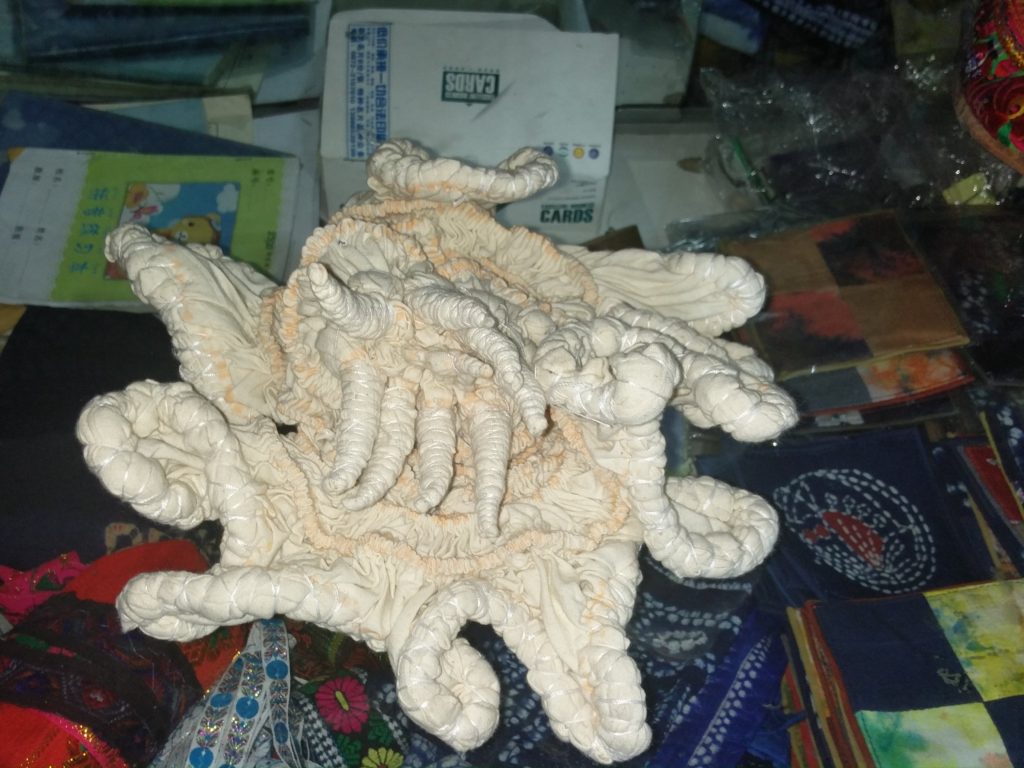
And the result is a beautiful piece of work like this one.
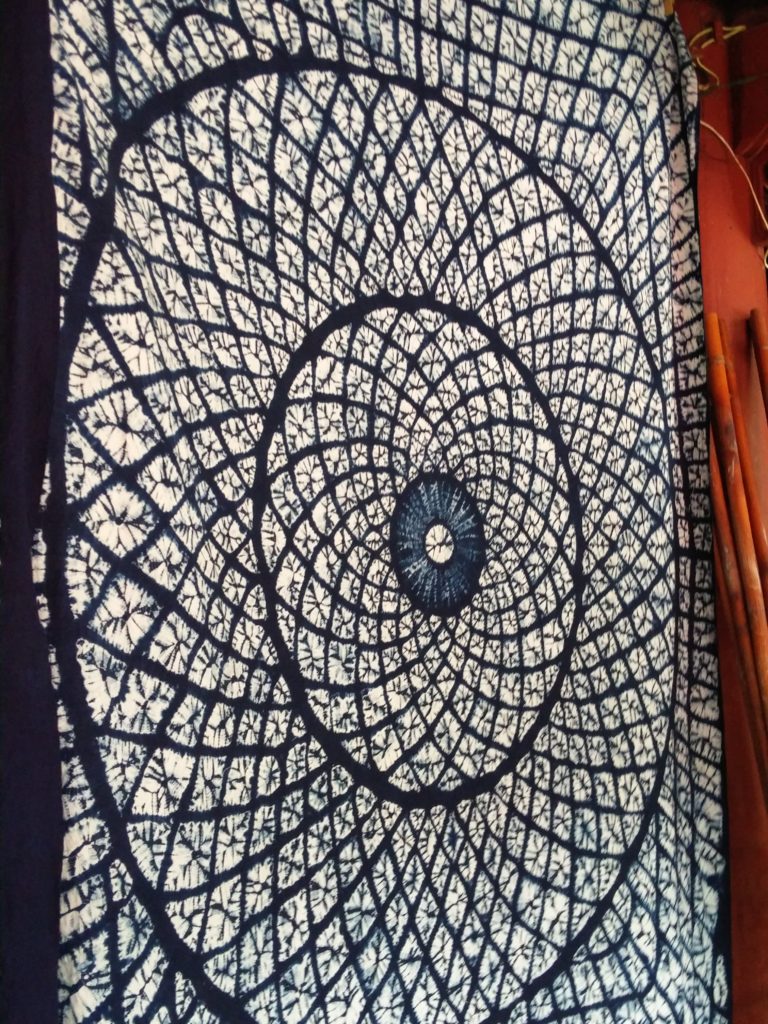
On the tour, we also saw some artifacts of the Cultural Revolution. Luxi told us that during the movement, many houses in the Dali region were seized by the Communist Party as part of their effort to achieve ‘true’ Communism and rid the country of capitalism and the “Four Olds”: old customs, old culture, old habits, and old ideas. Artworks, books and anything that threatened the Communist ideology was damaged or destroyed, like these paintings we saw in the house of the cheese-making family we visited.

At another house, we saw a giant chart drawn up on an exterior wall. Luxi told us the chart was used by the Communist officials to divide labor and supplies among the different families of the village.
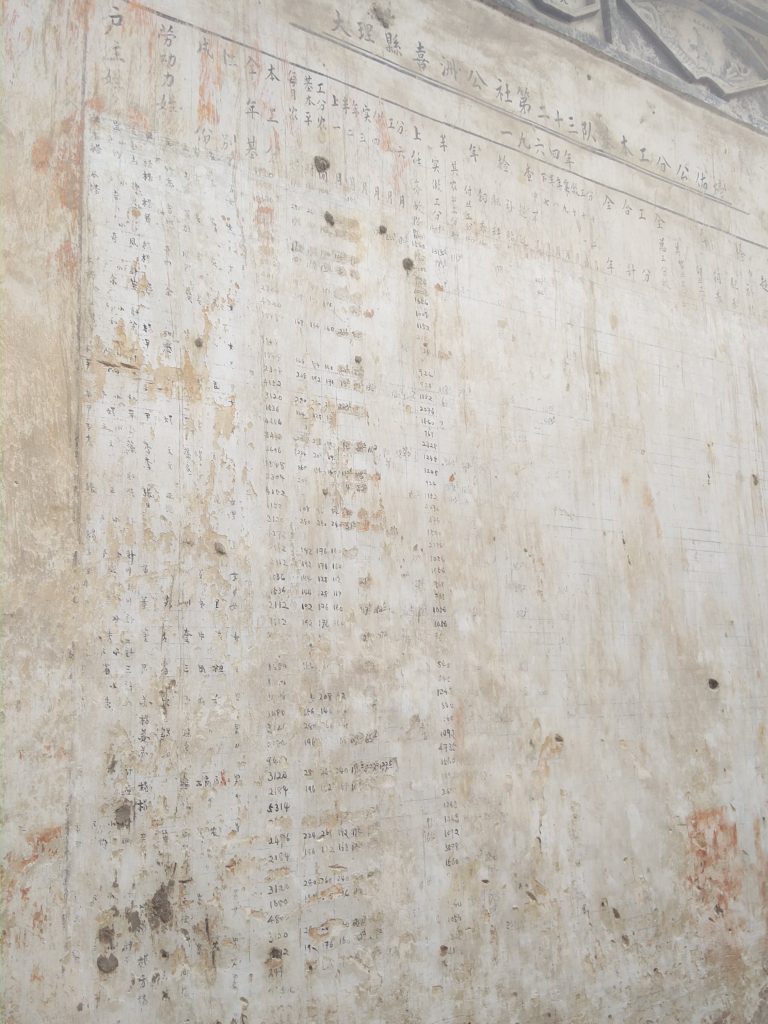
The next day, we hiked the foothills of the Cangshan Mountains (our second attempt, after our first had been thwarted by heavy rain). The way up was filled with gravestones made of the type of special marble that Dali is named for.
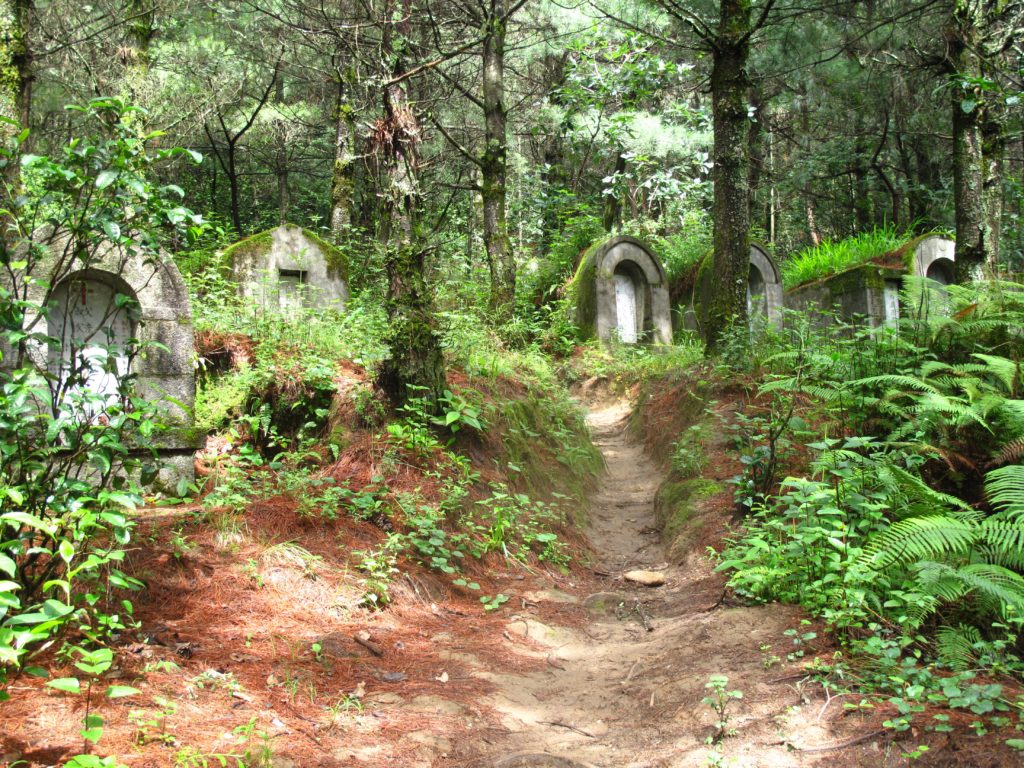
The trail was mostly deserted and we were happy to have a little more quiet time to ourselves.
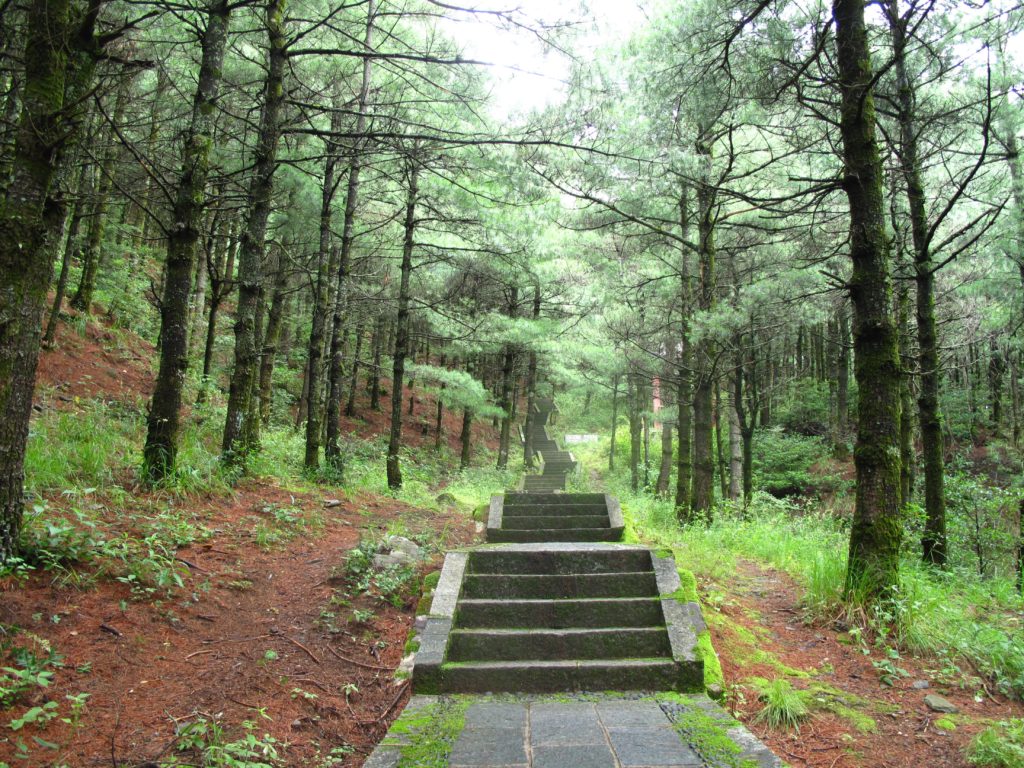
At the top, we had some hazy views of the lake and town below.

And we explored the Zhonghe temple.

We decided to take the cable car down…

…so that we could use the rest of the daylight for a bike ride down to Erhai Lake. The process of renting the bikes was entertaining, if not a bit time-consuming. The owner didn’t speak any English so he and Jason arranged the rental by talking through their translate apps. Jason would type in a question in English and translate it to Chinese. The owner would read it, type his response in Chinese and translate it to English for Jason to read. And so on, until the contract was signed and we were one our way. Don’t know how we would have done it without Google translate!

We biked through lots of ancient streets and alleys.

Until we finally made it to Erhai Lake (which literally means ear-shaped sea). We enjoyed some lazy time watching the fishermen and women, whose families have probably fished this lake for hundreds of years or more.

The next day, we said a very long goodbye to Lǜsè and were on our way to two of China’s Special Economic Zones: Shenzhen and Hong Kong.
———————–
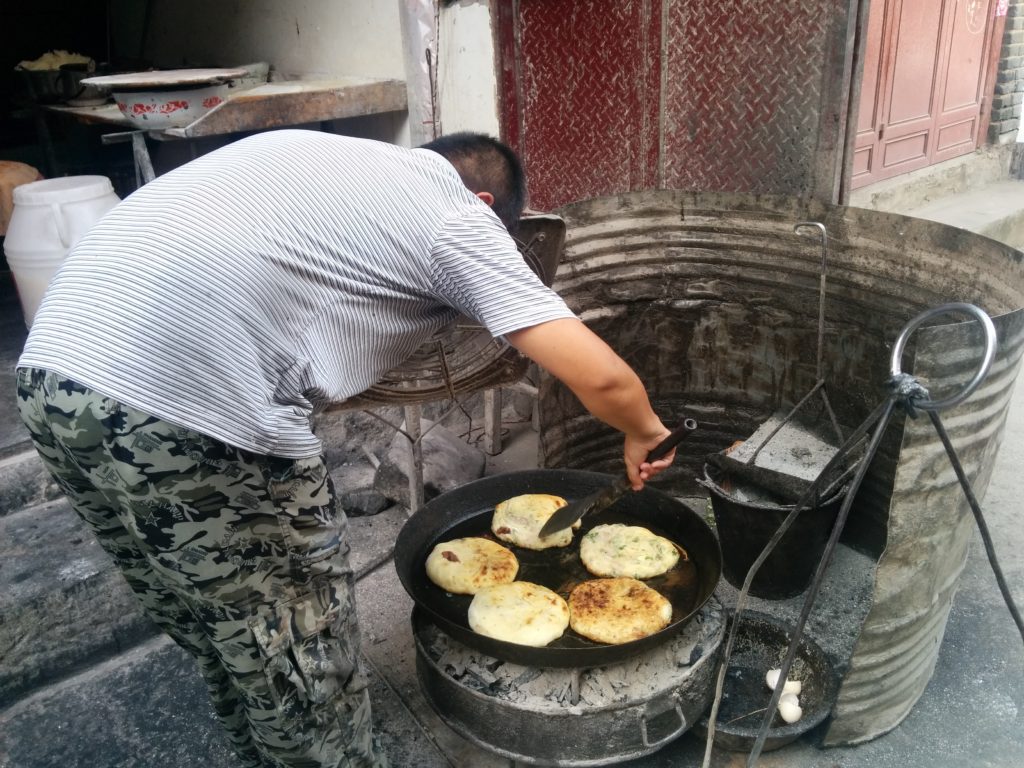
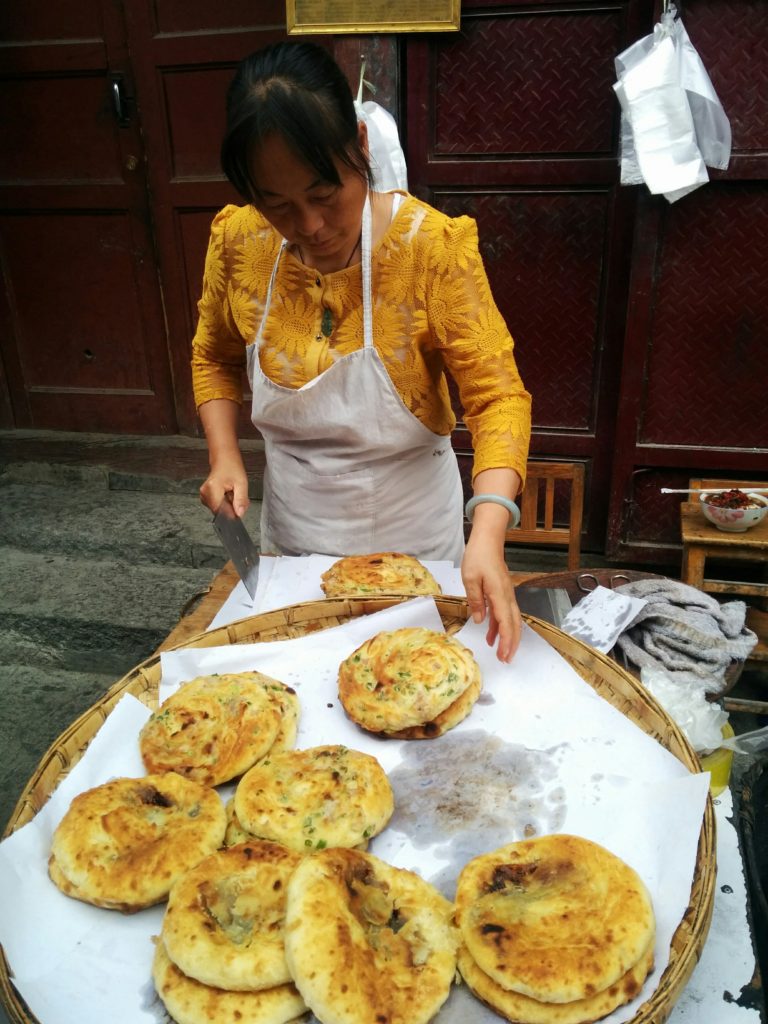

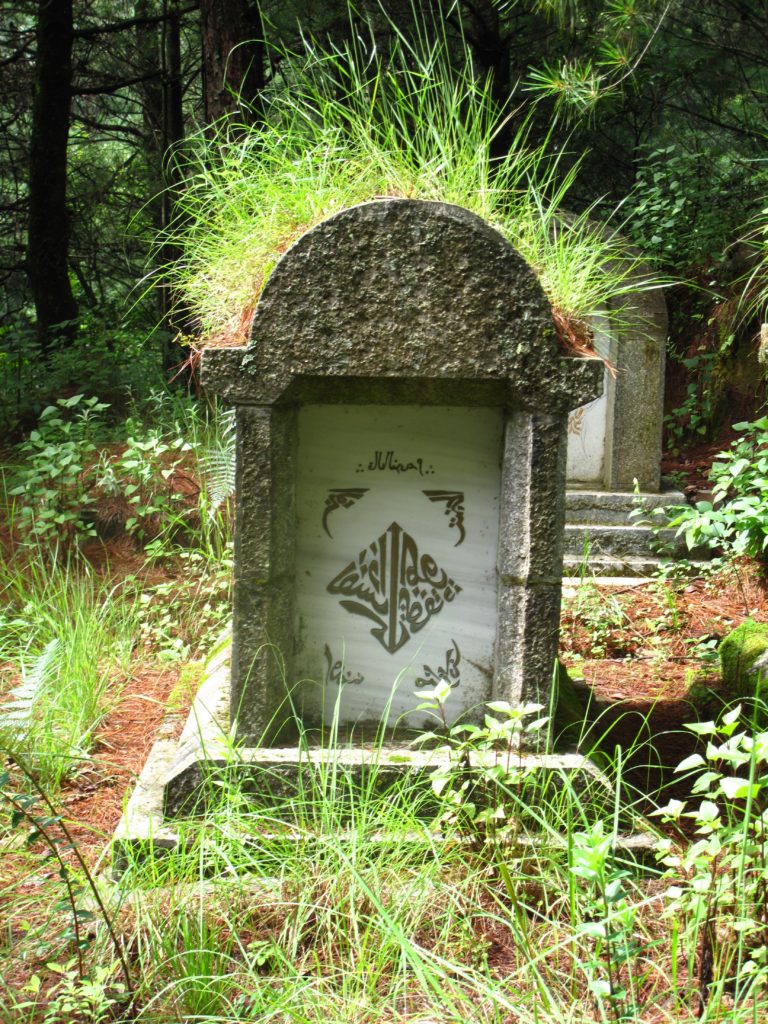

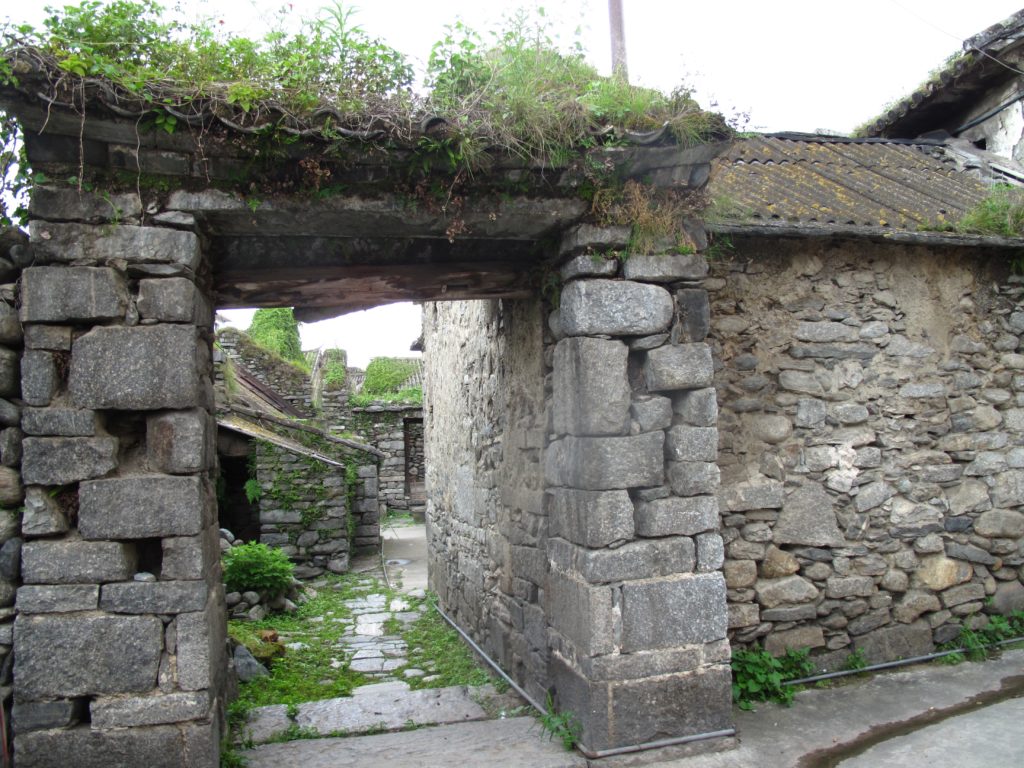
This is one of the best blogs you have written. I was never in Dali, but we were in Kunming just after China opened up to tourists. We did not see any other tourists. Our guide spent a long tim telling us about his bad experiences in the Cultural Revolution when he was sent to the countryside. I liked Kunming, but Dali sounds fascinating.